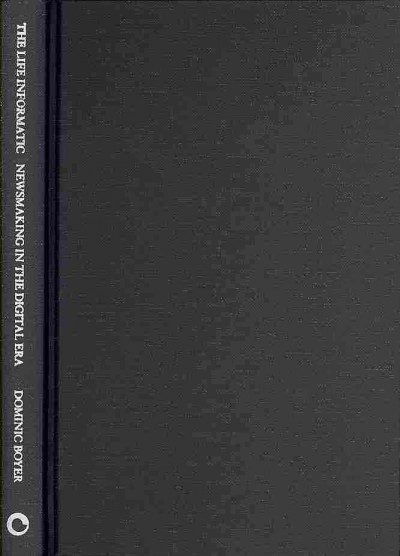 Author: Dominic Boyer
Author: Dominic Boyer
Publisher: Cornell University Press – 213 pages
Book Review by: Paiso Jamakar
I sometimes lament that these days the average news writer simple rewrites a press release and passes it on to the editor as simply his or her own, attaching a name, to get credit as a bylined story.
Often, I read the press release (and I get a lot of those flooding my Inbox nowadays) and compare it with a “news story” appearing in a reputable newspaper or news site, and except for a little bit of a rewrite, the two items are essentially the same.
Is this what is called ‘journalism’ these days? Not even bothering to check the facts, or to get other aspects of a story?
For example, every fourth Friday of the month the Bureau of Labor Statistics issues a press release on the national unemployment rate. If journalists bothered to read other data on the BLS website, they will find out that that agency does not even count people working in many components of the United States economy who are unemployed.
And, its methods – surveys of companies and households – are hardly reliable ways of estimating what’s the real unemployment rate. But the numbers in the press releases are passed on mindlessly to hundreds of millions of viewers, readers, and listeners of mass media as though they are sacred parts of the gospel truth!
The theme of this book is that people working in media are unable to maintain their positions as authoritative sources of information who use the skills and insight they’ve gained to make them authoritative.
News gatherers and reporters are constantly being superseded by ordinary people in getting the news first. Speed of acquisition and dissemination of news is a valuable quality taught in journalism courses and practiced in media organizations. Unfortunately in today’s world of intensive and extensive interconnectivity via social media – wherein information spreads literally like wildfire – it is impossible for news people to get a story first, all the time.
So what a lot of journalists are doing in order to establish their authority is to become knowledgeable in a given field: to become experts. When you know more about a given subject than the man-on-the street, by virtue of experience, an advanced degree or authorship of a book, you become authoritative. That is one answer to the challenges reporters face in today’s age of digital information and superfast communication.
Dominic Boyer writes that these days, many journalists have become sedentary office-based workers, and do not do much more than “screen work” by gathering and processing information from online sources. This is a far cry from the image of journalists as “roving truth-seekers” who go out and ask tough questions of many people, and get background information from multiple sources to piece together the complete story: the kind that win Pulitzers!
Boyer did work for this book inside three news organizations in Germany (a world leader in digital journalism) and interviewing journalists in the United States. He found that the old typical image of the journalist as a hard-hitting investigative reporter – as shown in movies and on television – is no longer true
Here is a brief overview of the contents of this book:
Prologue
Introduction: News Journalism Today
- The Craft of Slotting Screen work, Attentional Practices, and News Value at an International News Agency
- Click and Spin: Time, Feedback, and Expertise at an Online News Portal
- Countdown: Professionalism, Publicity, and Political Culture in 24/7 News Radio
- The News Informatic: Five Reflections on News Journalism and Digital Liberalism
Epilogue: Informatic Unconscious: On the Evolution of Digital Reason in Anthropology
This book takes a look at present-day journalism – and how it has changed from the past – with the writer taking a look at how work is actually done in three types of news organizations: an international news agency, an online news portal, and a round-the-clock radio news station. It is a revealing, eye-opening book.







